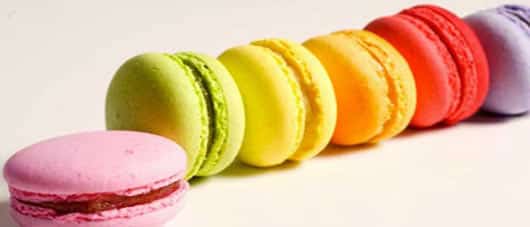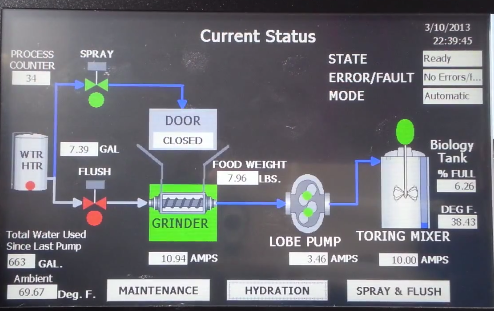Research reveals that while product and price are most important in retail, ambience and environment are also key.
In recent months, Uniqlo has displayed clothing lines in museum-style cases, Latino shopping mall company Legaspi has turned its retail outlets into cultural centres and Amsterdam’s Schiphol airport has created an ‘indoor park’ to encourage passengers to linger and buy.
These retail makeovers are tapping into a new demand from consumers: for shops to put their appearance and atmosphere first. Recent research suggests that when it comes to shopping, a store’s ambience is more important than its location or customer service.
In a study of consumers’ retail preferences by design consultancy Dalziel & Pow, store ambience was selected by 41 per cent of respondents, putting it ahead of location (31 per cent), friendliness of staff (30 per cent) and customer service (25 per cent). The quality of the store environment was the fourth-most important consideration for high street shoppers, the study finds. Ranking top is the range of products in a shop, at 81 per cent, followed by value for money (59 per cent) and the quality of products (54 per cent).
The results form the basis of Dalziel & Pow’s report, Influencing Shopper Behaviour, which is based on a survey of 1,000 female shoppers plus focus groups. Women were the subject of the survey because most of Dalziel & Pow’s retail clients have predominantly female shopper bases.
Customer priorities
“It was a surprise to see that store environment and ambience is the most important thing after product and value proposition,” says Keith Ware, group development director at Dalziel & Pow.
“It suggests that people will almost forgive poor customer service and abrupt staff as long as the retail experience supports the brand.”
Elsewhere, ‘lack of atmosphere’ is the most common reason for shoppers’ dislike or avoidance of certain shops. Thirty-five per cent of respondents cite this factor, closely followed by 34 per cent who dislike overly expensive products and 33 per cent who object to poor quality.
The report suggests that shoppers are attaching increasing importance to the brand experience in stores – particularly as consumer confidence improves in line with economic recovery.
It notes that numerous brands are testing new technologies and concepts in their shops to engage consumers in inspiring and exciting ways.
“I think retailers are experimenting more because they have more confidence,” says Rosalind Moir, new business executive at Dalziel & Pow. “There was a period when retail was a bit flat and brands didn’t know what to do, but now consumers are a bit more optimistic. Retailers are picking up on that and having more playful and interactive experiences with the consumer.”
Shoe retailer Clarks is among the brands currently experimenting with new in-store services. Last November, the company launched a pilot of an iPad-powered piece of technology for measuring children’s feet.
Clarks has developed several versions of its children’s foot gauge over a period of 90 years. The latest version is intended to make the measurement process easier, more interactive and more fun for parents and children. A footplate and new ‘digi-tape’ device are used to measure the child’s foot and the data is relayed to an internal Clarks iPad app that instantly presents a shoe size guide for that child.
“We wanted to bring the foot gauge into the 21st century and keep up with technology,” explains Emma Jefferies, UK and Ireland children’s marketing manager for Clarks.
“We know that our customers are increasingly digital and that our really young children customers are using iPads at home, so we wanted to bring those experiences together for people when they are in store.”
The new tool replaces a mechanical foot gauge that was not portable and that Jefferies says some young children found “daunting”. Instead, shop assistants can bring the iPad to children and parents wherever they are in the store, while Clarks’ animated brand characters appear on the iPad display when younger children use the gauge.
The technology launched in 50 stores initially but Clarks expects it to be available across all of its UK shops by the summer. In addition, Jefferies says the retailer is investigating other possibilities for the iPads, such as helping shoppers look for products online or to bring advertising campaigns to life through interactive applications.
“We’re working with consumers to see which parts of the retail experience aren’t as strong as others and how we can enhance them,” she says.
Keeping in touch
Dalziel & Pow’s study shows that despite the rapid growth of online shopping, most people appreciate the ability to touch and feel products in a physical retail setting. For example, 76 per cent of respondents say they try on items of clothing before making a decision to buy, while 60 per cent either strongly or slightly agree that they are prone to buy something other than their intended purchase when shopping on the high street.
“The idea that the death of the high street is coming and everyone is going to shop online doesn’t seem right,” says Ware at Dalziel & Pow. “It’s still really important for customers to be in the store to see and touch the products.”
The study also finds that high street shopping is a popular social activity. Fifty-nine per cent of respondents agreed shopping is good to catch up with friends. Fifty-seven per cent enjoy making unplanned clothes purchases and 56 per cent like to allow themselves to dream when shopping.
Increasingly, online retailers are looking for ways to offer this kind of excitement and spontaneity to shoppers. Gamification tool Yipiii, for example, allows consumers to win extra prizes or discounts on their purchases via a spinning wheel that appears as a game during the online check-out process. Yipiii, which launched in 2012, counts online grocery retailer Ocado and German furniture store Lutz among its affiliate clients.
In February, the company launched a ‘checkout booster’ service to tackle the problem of abandoned shopping carts. Shoppers are sent emails or the game appears when they click away from the the third-party retailer’s screen
to encourage them to play for discounts and thus complete their purchase.
Yipiii founder and chief executive Christoph Klingler says making shopping fun and interactive is important for shaping consumer behaviour. “You can convert the whole shopping process into something entertaining,” he suggests. “If you do, shoppers are more open to do different things or act on different offers.”



